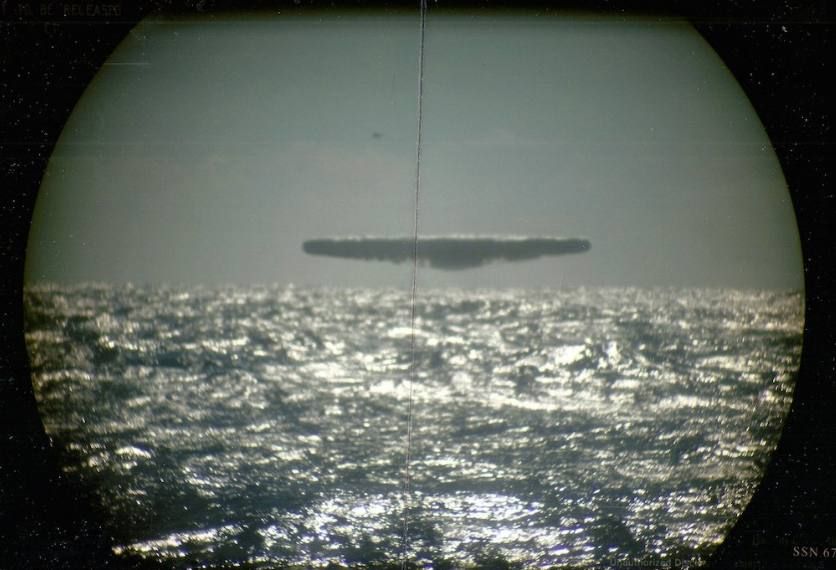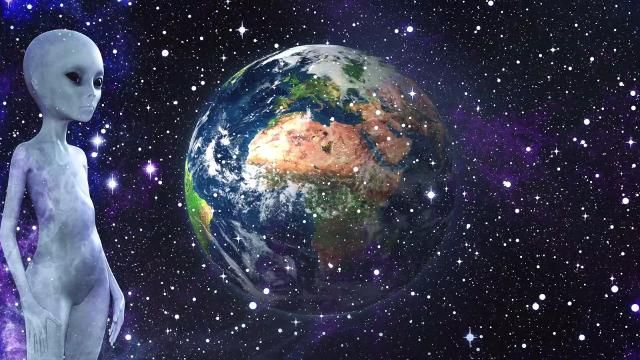This Silicon Valley Startup is Dedicated to Detecting UFOs Off the California Coast
Article by MJ Banias October 23, 2019 (vice.com)
• A team of venture capitalists, university professors, and military veterans are launching a non-profit project to track UFOs (or the new term UAP – Unidentified Aerial Phenomenon) off the coast of California. Based in Oregon, UAP eXpeditions will provide “the public service of field testing new UAP related technologies.”
• Along with some of the Silicon Valley UFO Hunters, UAP eXpeditions will pioneer the ability to predict, find, observe, and document UAP for study and analysis. Says Kevin Day, the group’s founder and CEO, the company will use “classical observation techniques, by trained observers and scientists, while using the latest experimental technologies—in the right places and the right times.”
• Day is a retired U.S. Navy Chief Petty Officer and radar operator who served on the USS Princeton during the 2004 “Nimitz Tic Tac UFO Incident”. He has also appeared on the History Channel’s Unidentified: Inside America’s UFO Investigation and Discovery Channel’s Contact.
• Day recalls tracking the infamous “Tic Tac” UFOs for several days around Catalina Island off the coast of California using the USS Princeton’s advanced radar system. Now, he believes that these objects continue to operate along the same trajectory and “migrate” from Catalina Island (off of LA) south along the California coast to Guadalupe Island (off of the Baja Peninsula of Mexico).
• Day believes that his experience tracking these unidentified objects has given him special abilities such as “advanced cognition”.
• UAP eXpeditions intends to put state-of-the-art cameras, experimental monitoring devices, and other high tech gear into the field and attempt to track unknown aerial objects off the coast of California. This way, the company can “offer technology developers a way to test their new tech at no direct cost to them.”
• Leading the UAP eXpeditions’ team of scientists is Dr. Kevin Knuth, a former scientist with NASA’s Ames Research Center, now an associate professor of physics at the University of Albany specializing in machine learning and the study of exoplanets. Knuth says, “[T]he goal of the expedition is to give us some ground truth. We aim to try to observe these objects directly, and record them using multiple imaging modalities.”
• First, the team “will obtain current satellite imagery of the area and determine whether these anomalous objects can be observed. We will monitor these satellite images both manually and using machine learning and build up a database of detections, classifications, and any observed patterns of activity,” says Knuth. Second, in about a year the team will anchor a large boat off the coast of California loaded with various cameras and sensors to detect and record anomalous aerial activity. If the satellite imagery identifies a cluster of unknown objects, the team will go hunting for UFOs.
• “We plan to have high-quality drones in the air with imaging capabilities. We are looking into IR imaging, as well as detectors for x-ray, gamma-ray and custom-built neutron detectors (which are designed to look for dark matter),” says Knuth. “The key to ensuring consistency is reproducibility and this requires additional study.”
• It is, admittedly, a bit of a wild goose chase and will cost a boatload of cash. While Day’s team is working on grant proposals and potential crowd funding, they know that the vast majority of funding will have to be private. Silicon Valley tech entrepreneur and MIT technologist Rizwan Virk and the Toronto-based CEO of the quantum computing company, ReactiveQ, Deep Prasad have both signed on to help with securing investment for the project.
• Other individuals on the team include Luis Elizondo, former Pentagon staffer who quit his job to hunt UFOs with Tom DeLonge; Sean Cahill, the former Chief Master-at-Arms who served aboard the USS Princeton during the 2004 Nimitz Incident; and optical physicist and UFO researcher Bruce Macabee.
• Knuth states, “The failure to study these (UFO) phenomena scientifically has resulted in a state of ignorance, which is unacceptable.”
With this summer’s revelation that the US Navy considers UFOs and “Unidentified Aerial Phenomena” (UAPs) to be real, a team of venture capitalists, university professors, and military veterans are launching a project to track UFOs off the coast of California.

UAP eXpeditions is a non-profit group based in Oregon that will “field a top-notch group of uber-experienced professionals providing the public service of field testing new UAP related technologies.” With some of the Silicon Valley UFO Hunters, UAP eXpeditions will pioneer the ability to predict, find, observe, and document UAP for study and analysis. They will use “classical observation techniques, by trained observers and scientists, while using the latest experimental technologies—in the right places and the right times,” Kevin Day, the group’s founder and CEO, wrote in a Facebook post viewed by Motherboard.

Day, who has appeared on the History Channel’s Unidentified: Inside America’s UFO Investigation and Discovery Channel’s Contact, is a retired U.S. Navy Chief Petty Officer and radar operator. Day served in the Nimitz Carrier Strike Group on the USS Princeton during the 2004 infamous “Nimitz UFO Incident” which was reported by The New York Times in December of 2017.
He recalls tracking the infamous “Tic Tac” UFOs for several days around Catalina Island off the coast of California using the USS Princeton’s advanced radar system. Now, he believes that these objects continue to operate along the same trajectory and “migrate” from Catalina Island south along the California coast.
The company’s white paper is pretty wild. It asks, “Do fleets of UAP ‘migrate’ from Catalina Island to Guadalupe Island with a certain frequency? And if so, how well do whale songs correlate, if at all, to UAP appearances?” It’s unclear how whale songs are relevant here, but let’s move along.
Day, who believes that his experience tracking these objects has led to some curious special abilities, such as “advanced cognition” told Motherboard that the organization is hoping to “offer technology developers a way to test their new tech at no direct cost to them.” Using state of the art cameras and other experimental monitoring devices, the idea is to put this high tech gear into the field and attempt to track unknown aerial objects off the coast of California.
Leading the team of scientists is Dr. Kevin Knuth, a former scientist with NASA’s Ames Research Center, now an associate professor of physics at the University of Albany. Knuth specializes in machine learning and the study of exoplanets.
While the organization and the project is still in its infancy, Knuth told Motherboard that “the goal of the expedition is to give us some ground truth. We aim to try to observe these objects directly, and record them using multiple imaging modalities.”
FAIR USE NOTICE: This page contains copyrighted material the use of which has not been specifically authorized by the copyright owner. ExoNews.org distributes this material for the purpose of news reporting, educational research, comment and criticism, constituting Fair Use under 17 U.S.C § 107. Please contact the Editor at ExoNews with any copyright issue.


 His research protocol was, to be blunt, not transparent. He never told any of the scientists he recruited to his team where he acquired the idea for the new technology, because, according to Thomas, “First, they would have thought I was really weird, and second—and most importantly—it would have prevented them from being successful in implementing the necessary steps to create the technology. It would have been so far removed from their own belief systems that it would have been impossible for them to implement my vision. So, I keep that part secret.”
His research protocol was, to be blunt, not transparent. He never told any of the scientists he recruited to his team where he acquired the idea for the new technology, because, according to Thomas, “First, they would have thought I was really weird, and second—and most importantly—it would have prevented them from being successful in implementing the necessary steps to create the technology. It would have been so far removed from their own belief systems that it would have been impossible for them to implement my vision. So, I keep that part secret.”



